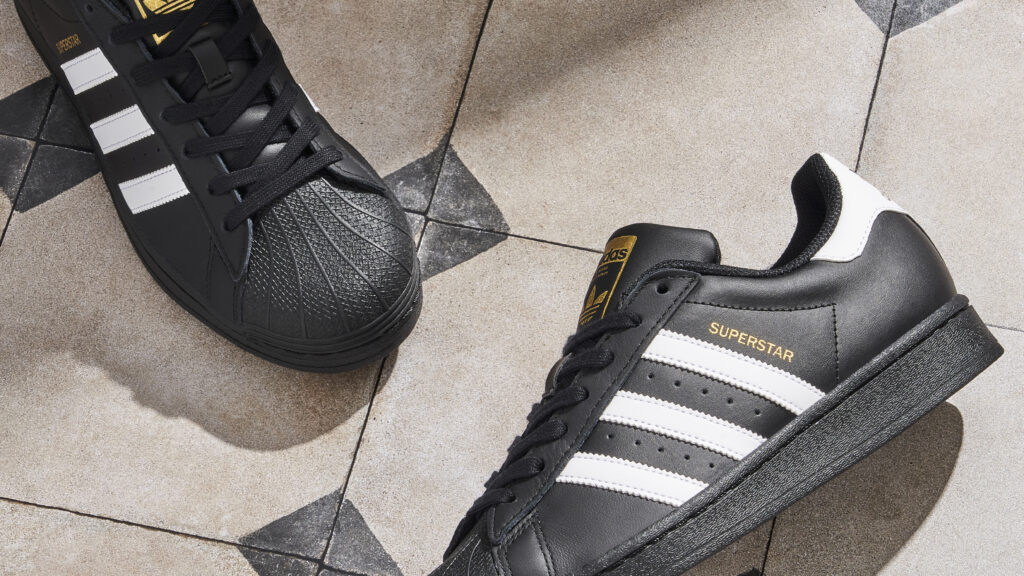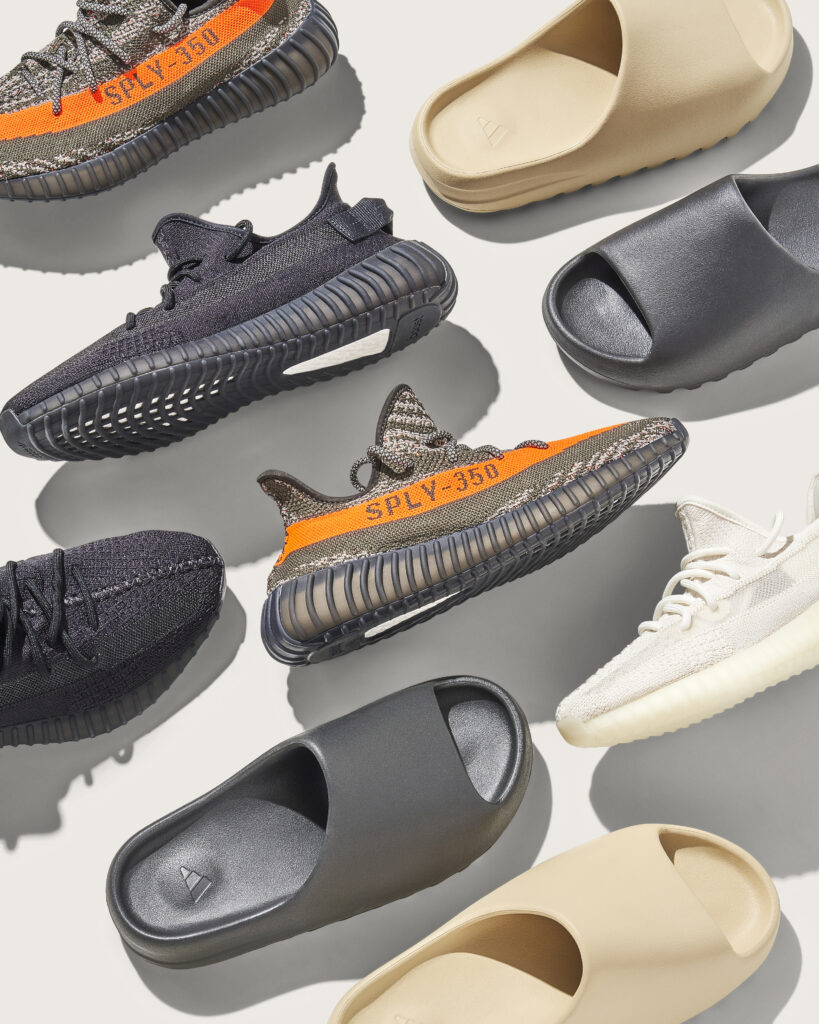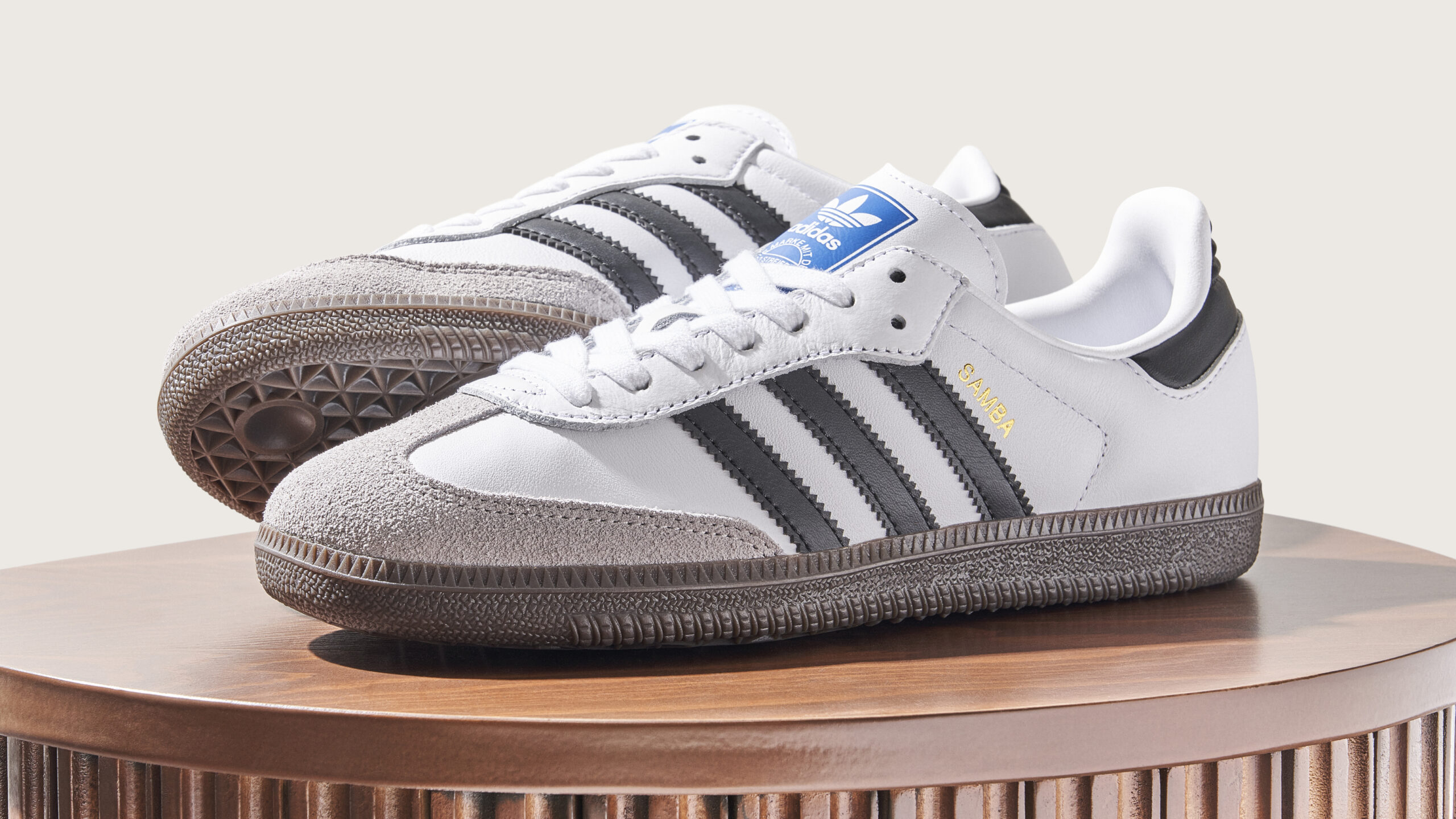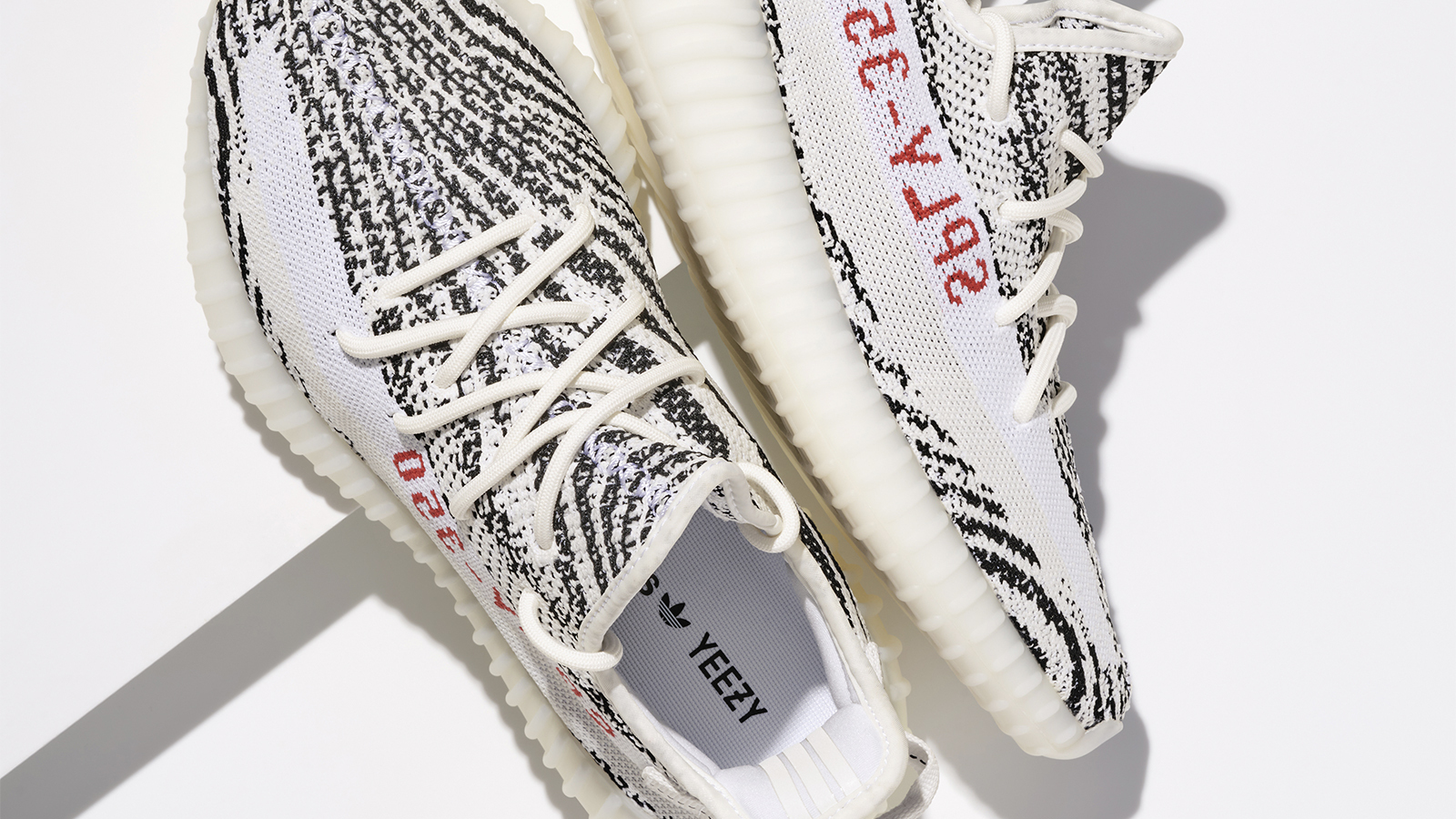Adidas has been having a big year. In the 74th year of the brand, once again a low-top sneaker from the German giants took a huge foothold in the trend cycle in the form of the Samba. It’s more than likely that you’ve been seeing the model everywhere from your Instagram feed to catwalk collaborations, but how did a brand that started out making football boots wind up adorning the feet of some of the world’s biggest celebrities and tastemakers?
Adidas (a portmanteau of founder Adi Dassler), delivered their first revolutionary athletic shoe in 1950 — the Samba, named for the Brazilian world cup held that same year, was originally designed for use in cold icy conditions, to give players better traction on the pitch. The shoe was mid-top height, had a leather upper and a gum sole, and while the overall silhouette of the Samba has changed in the decades that followed, one key feature has always remained. The three stripes.

Four years on from adidas’ official birthday, the West German football team clinched a surprise world cup victory against Hungary, who had previously handedly beaten them 8-3. The win made adidas a global name thanks to the recognition (and subsequent reporting) that the lighter overall weight and screw-in studs of the West German team’s boots gave them the edge on the muddy pitch. The ‘miracle of Bern’ allowed adidas to finally step foot outside of Germany.
The 1960s saw further historic athletic moments with adidas at the centre. In 1967, Katherine Switzer became the first woman to run in the Boston marathon as an official runner, with a pair of adidas Specials (not to be confused with the later Spezial) on her feet. Despite multiple attempts to stop her completing the marathon, Switzer made history and the now iconic images from her defiant run further solidified adidas in the public eye as a game changer for sports footwear.
Also launching in ‘67 was adidas’ first foray into apparel, a tracksuit featuring the three stripes that is now as recognisable as any of the footwear adidas produce. Making athletic focused clothing accessible to consumers while also having that same clothing worn by some of the world’s most famous footballers was gold dust for the brand, as less than five years later, casual athletics like jogging would take the American market by storm and adidas became the go-to for performance wear.
After a decade or so of popularity in the US, adidas began to see opportunity in the market, and with the sneaker boom of the 1980s, another stepchange for the brand took them to the heights we’re still seeing now.
Despite being designed as a basketball shoe, the Superstar was an early success in the US market, quickly making the jump from court to sidewalk, in large part thanks to around 75% of NBA players wearing the style between the mid ‘70s and early ‘80s. This disruption of the usually Converse dominated court along with emergence of groups like Run-DMC further adding to the desirability of adidas’ shell toe sneaker.

During the 1960s and ‘70s, adidas’ popularity in sports had continued to grow on a different court. Tennis legends like Robert Haillet, Rod Laver and John Newcombe all staked their name (literally) on adidas’ sneakers. Designed in all white, with a now iconic green heel tab, adidas reinvented their three stripe branding into subtle perforations down the sides of the shoes uppers — a detail that luxury designers like Raf Simons would go on to utilise in collaborations nearly 45 years later.
When Robert Haillet retired in 1971, his namesake shoe was handed over to the man who’s name and portrait still feature on it — an American named Stan Smith. Ironically, the portrait that adorns the tongue of the sneaker was made during a short six month period where Smith didn’t have a moustache.
By 1988, 22 million pairs of the Stan Smith sneakers had sold, garnering a place in the Guinness World Records, and with reportedly over $65million in revenue by 2008, in 2014, adidas relaunched the signature sneaker that is still one of it’s flagship styles and frequently collaborated on silhouettes.
The Stan Smith has undeniably taken on a life of its own outside of the man they’re named for, as portrayed in the 2018 book ‘Some People Think I’m A Shoe’, that catalogues all the cultural touchpoints the silhouette has been involved in from its origins in sportswear up to the numerous collaborations from luxury fashion brands. Craig Green, Yohji Yamamoto, the aforementioned long running partnership with Raf Simons which concluded in 2019, and more recently Balenciaga, have all put their signature spin on the shoes.

Collaboration are nothing new for adidas, partnerships with notable figures were the bread and butter for the brand’s sportswear releases. However, when the team up with Kanye West’s Yeezy brand launched, adidas’ popularity reached the stratosphere. Debuted in early 2015, the Yeezy Boost 750 was a unique, game changer sneaker that benefited from the association with one of the world’s most popular artists and his personal design point of view. The following releases of the Yeezy Boost 350 would see almost immediate sell outs and huge resale numbers. A new adidas iconic silhouette was established and by the end of 2022 an estimated 17% of Gen Z customers claimed to own a pair of Yeezy shoes. The partnership ended suddenly in October 2022, after 236 pairs were released.
Despite the long history of adidas and the number of silhouettes that have dominated the sneaker trend cycles for nearly 50 years, it’s the brand’s original sneaker that has had the spotlight for the past year. It’s almost impossible to ignore that 2023 has been the year of the Samba.
From luxury collaborations of its own (most notably from the likes of Grace Wales Bonner), to regularly selling out general release pairs, the Samba train seemed to come hurtling out of the station towards the end of 2021, and is still not slowing down. This kind of pace and turnaround is exactly what the brand needed after the ending of the industry defining popularity of the Yeezy line.
Sambas have been lifted out of terrace style and the football grounds that have proudly worn them for decades and have been elevated to the level of catwalk fashion. The style is now as recognisable for adidas as the Superstar or Stan Smith, and though reporting would suggest the height of the trend is behind us, searches are still up almost 80% on last year and more collaborative pairs are on the way. The Samba train is still going strong.
Adidas didn’t have an overnight, meteoric popularity. Decades of dedication to design and performance have instead given them time to perfect silhouettes, refine the athletic technologies like their boost sole, and gain confidence in the minds of professionals and casual shoppers alike. 2024 marks the brand’s 75th year and all signs point to further growth and a continued rise for the German giant.



